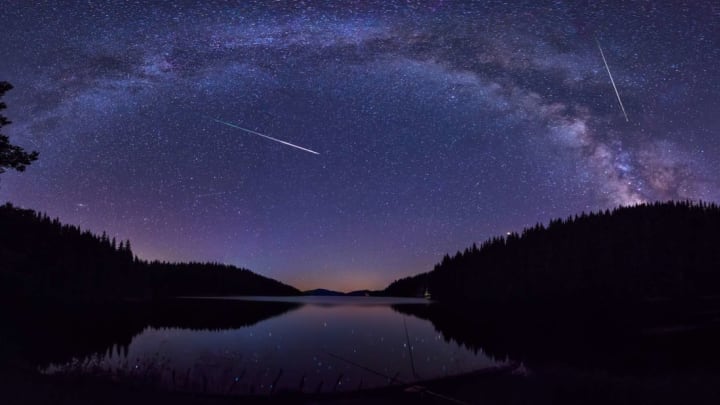If you missed Halley's Comet's last trip through the inner solar system in 1986, you'll have to wait a while to catch its next appearance. The comet is only visible from Earth every 75 to 76 years. Though the comet itself is elusive, the debris from its tail lights up the night sky on a regular basis. To view the Orionid meteor shower when it peaks today—Monday, October 21, 2019—here's what you need to know.
What Are the Orionids?
As Halley's Comet propels through our solar system, it drags a trail of rocks and dust behind it. The tail is vast enough to a leave thick band of space debris in its wake. Every October, our planet passes through this rocky field, producing brilliant "shooting stars" as the meteors burn up in the atmosphere. From Earth, the meteor shower appears to originate from the constellation Orion, which is how it got its name.
When to See the Orionid Meteor Shower
The Orionids are visible from Earth starting in the beginning of October, but they don't peak until the latter half of the month. This year, the meteor shower will be brightest the night of Monday, October 21 and the morning of Tuesday, October 22. The moon will be around its last quarter phase at this time, which means that bright skies could wash out the light show for many. But if you wait until the hours leading up to dawn, when the moon sets and skies are darkest, you may be able to spot the shower.
To see it, make sure you're in an area with clear, open skies and minimal light pollution. Whether you live in the Northern or Southern hemispheres, you should be able to experience the phenomena if conditions are optimal.
[h/t Newsweek]
